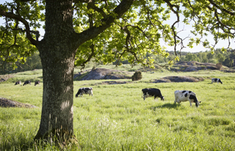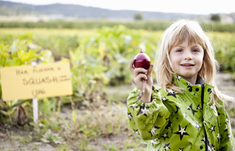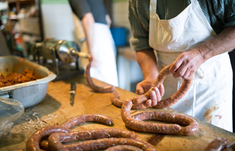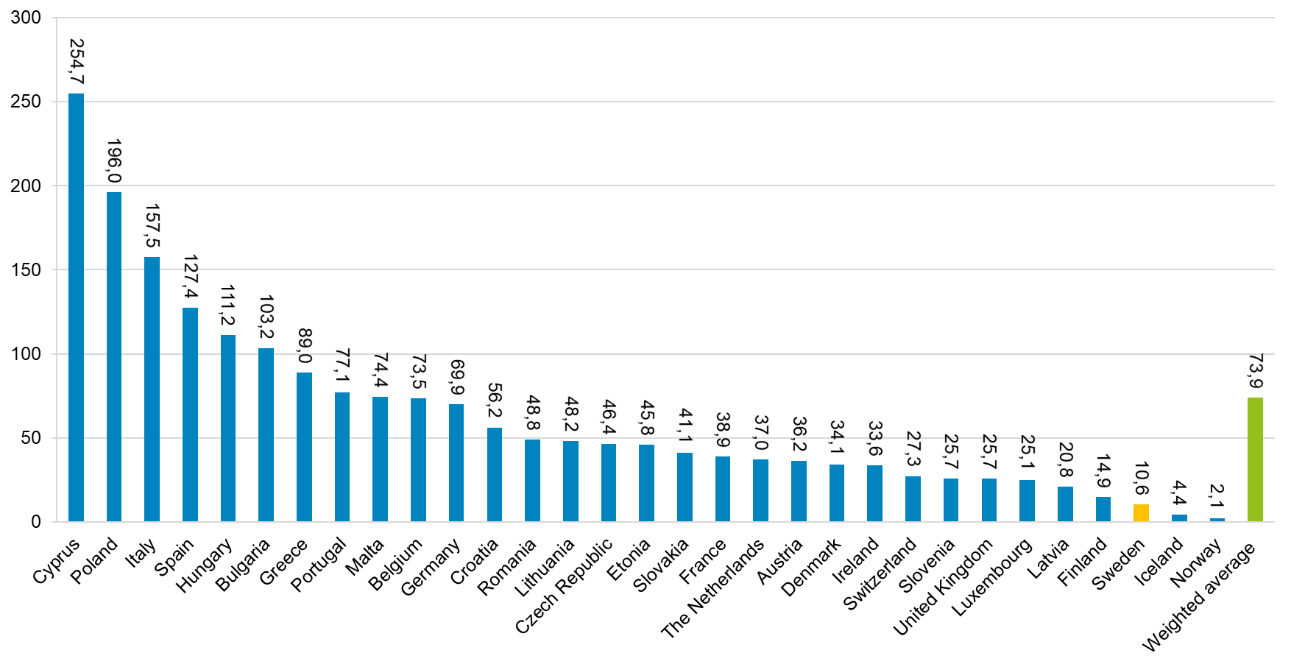Swedish food has many advantages
Sweden has very ambitious targets when it comes to sustainability and values in food production, such as animal health, restrictive use of antimicrobials and pesticides. These values has for a long time been a focus for Swedish consumers, companies, authorities and government.

Photo: Scandinav, Matilda Lindeblad

Scandinav, Stephan Berglund

Mostphotos
The use of antibiotics in the animal production is the lowest in the EU. Sweden is also one of the countries in the EU using the least amount of pesticides per cultivated area. The Nordic climate gives a lot of daylight in the summer and low temperatures, stimulating the forming of aroma in Swedish fruits and vegetables making them taste more.
Added value in Swedish cultivation
Swedish cultivation has added value that result from strict enforcement of Swedish laws, regulations, and various types of commitments, which makes Swedish requirements stricter than the general EU requirements. At the same time, there is an increased demand for sustainably produced agricultural and horticultural products among consumers and restaurants. General added values exist for products such as fruit, berries, vegetables, potatoes, legumes, cereals and oilseeds.
- Sweden imposes more restrictions on the use of pesticides in farming compared to many other countries. This is an added value; it is beneficial to the people working in agriculture, as well as the consumers who eat the products, not to mention the environment. Government authorities and the farming sector are working to promote a healthy environment and good health through the environmental objectives “A non-toxic environment,” “Good-quality groundwater” and “A varied agricultural landscape.”
- Sweden also has natural advantages, the climate is colder up north and this reduces the need to use certain pesticides. The soil types in Sweden are favourable for farming, and the climate reduces the risk of damage by insects, and other pest organisms. This means that we are one of the countries in Europe that uses the least amount of pesticides per cultivated area.
- Fruits and vegetables grown in Sweden have low levels of pesticide residues. A number of plant-based foods are monitored yearly by the Swedish National Food Agency, to ensure that they do not exceed the maximum residue limits.
- It is illegal to use chemical agents on harvested products in Sweden. No chemical agents, intended to protect harvested fruit and potatoes from harmful organisms, are approved in Sweden. Instead, the problem has primarily been addressed through the implementation of customized and improved storage methods.
- In Sweden the pressure on the groundwater is low. Sweden is among the countries in the EU with the lowest pressure on the groundwater, with a water stress index of about one percent.
- The right choice of varieties of plants, a cool growing climate and long daylight hours can result in tastier products, because low temperatures stimulate the formation of flavourful and aromatic substances. Thus, the climate conditions in Sweden are ideally suited to the production of aromatic fruits and berries.
- The use of alternative crop protection methods is important. Instead of pesticides, Swedish farmers use crop rotation and select plant varieties that are naturally resistant to certain harmful organisms.
Added value in Swedish livestock production
Swedish meat and milk production has an added value in comparison to other countries, which is based on the fact that Swedish animal protection laws are stricter than in many other countries. At the same time, there is an increased demand for sustainably produced agricultural products among consumers and restaurants. Above all, Swedish livestock production focuses on good animal health care and prevention of animal diseases, to a greater extent than in many other countries. In addition, greenhouse gas emissions in Swedish meat and milk production are relatively low and the production contributes to biological diversity and preservation of cultural heritage assets. What exactly gives added value to Swedish meat and milk production compared to other countries?
- Sweden can boast with the lowest antibiotic use in livestock production of all EU countries. There is no need to treat healthy animals with antibiotics. This reduces the risk of spreading resistant bacteria, and thus ensures that antibiotics are used effectively even in the future.
- There is a very low presence of bacteria, such as salmonella, in Swedish livestock production. Thus, consumers who choose to buy Swedish meat run a lower risk of getting sick in foodborne bacteria.
- Swedish animal welfare is good, and the animals are kept in an environment that improves the possibilities for them to behave naturally. The tails of the pigs are not docked (clipped off), and it is forbidden to trim the beaks of hens and chickens.
- Swedish cattle, sheep and lambs are allowed to graze outdoors and are let out to pasture in the summer. Through grazing, these animals also contribute to the preservation of natural pasture that have high biodiversity.
- Swedish animals are stunned or anaesthetized prior to surgical procedures and slaughter, and the transport to the slaughterhouse may not exceed eight hours.
- The Swedish animal welfare regulations impose relatively strict limits on levels of moisture, carbon dioxide, manure gases and noise. All Swedish animal barns must have windows, to allow daylight into the building.
- The keeping of animals in smaller units makes it possible to identify sick animals and to give them individual medical treatment.
- Due to efficient animal rearing and feed production, the carbon footprint from Swedish meat and milk production is lower than in many other countries.
Use of antibiotics

The use of antibiotics in mg/PCU in EU-27 plus four more countries in 2022. PCU (population correction unit) means the total weight in kg of live animals in a country. European Medicines Agency, 2022.
In German/Auf Deutsch
Revision date: 2024-01-18